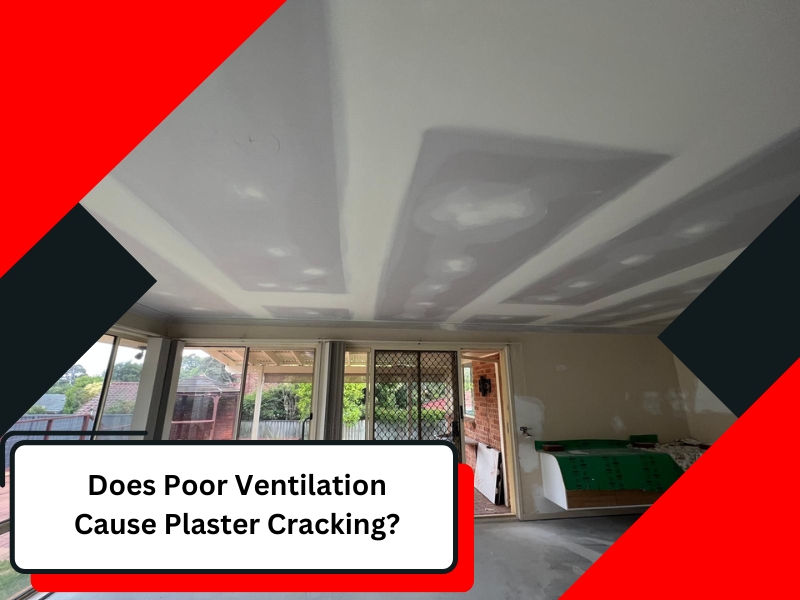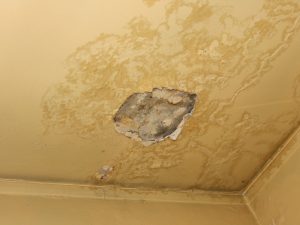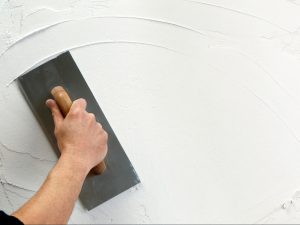One often overlooked factor when maintaining the integrity of your home’s plaster is ventilation. Proper airflow keeps the air fresh and plays a significant role in preserving your plaster’s condition. Poor ventilation can lead to various issues, including plaster cracking, which can be costly and time-consuming. This article will explore the connection between poor ventilation and plaster cracking, the signs to watch for, and how to prevent or repair damage.
How does poor ventilation impact plaster cracking?
Poor ventilation can cause various issues in your home, and plaster cracking is one of them. Here’s how:
- Humidity Build-Up: Lack of airflow traps moisture, which seeps into walls and affects the plaster. Over time, this can weaken the plaster and cause cracks to form.
- Condensation: When warm, moist air cannot escape, condensation can form on the walls. This moisture can lead to plaster softening and, eventually, cracking.
- Temperature Fluctuations: Poor ventilation means warm air can build up in some regions of your home, causing the plaster to expand and contract with the temperature changes, leading to cracking.
- Mould Growth: High moisture levels from poor ventilation encourage mould growth, damaging the plaster and leading to deterioration.
What are the signs of plaster cracking due to poor ventilation?
Identifying plaster cracking caused by ventilation problems can sometimes be tricky. However, there are a few tell-tale signs to look for. Here’s what you might notice:
- Visible cracks in the plaster: Fine or deep cracks appear, particularly in areas with poor airflow, like bathrooms or kitchens.
- Damp spots: Areas of the wall may feel damp to the touch, and there could be visible signs of water stains.
- Mould or mildew: A musty smell or mould growth along the cracks could indicate moisture build-up due to poor ventilation.
- Flaking or bubbling paint: If your walls are painted, you may notice paint bubbling or peeling in areas where plaster is cracking.
If you notice these signs, it’s essential to address the root cause of the issue — poor ventilation — before repairing the cracks.
Can excess moisture lead to plaster cracking?
Excess moisture is one of the leading causes of plaster cracking, especially in spaces with inadequate ventilation. Here’s why moisture is so damaging to plaster:
- Weakens the plaster: Over time, continuous exposure to moisture causes plaster to soften, making it more prone to cracking and breaking.
- Dries out plaster unevenly: As moisture evaporates from the plaster, uneven drying can cause cracks to form.
- Supports mould growth: Moist conditions foster the growth of mould and mildew, which can infiltrate the plaster and cause it to deteriorate.
- Corrodes the plaster surface: Continuous exposure to high moisture levels can cause the plaster’s surface to crumble, further accelerating the cracking process.
Maintaining a dry, well-ventilated environment is key to preventing plaster from cracking due to excess moisture.
What causes plaster to crack apart from ventilation?
While poor ventilation is a major culprit, other factors can contribute to plaster cracking. These include:
- Age of the plaster: Older plaster is naturally more brittle and prone to cracking, especially if it wasn’t properly maintained.
- Poor installation: If plaster is not applied correctly, it may be more prone to cracking under stress.
- Structural movement: Any structural movement, such as shifting beams or walls, can cause plaster to crack.
- Temperature change: Severe temperature changes can cause the plaster to expand and contract, resulting in cracks.
While these issues also cause plaster cracking, proper ventilation can help prevent moisture-related cracking, a more manageable problem.
Why is proper ventilation crucial for plaster longevity?
Proper ventilation improves the overall air quality in your space and helps preserve your plaster’s integrity. Here’s why good ventilation is essential for plaster longevity:
- Prevents moisture build-up: Proper airflow reduces humidity and condensation, preventing moisture from seeping into the plaster.
- Regulates temperature: Ventilation helps maintain a stable temperature, preventing the plaster from expanding and contracting too much.
- Reduces the risk of mould: With sufficient airflow, the chances of mould growth are minimised, protecting your plaster from deterioration.
- Improves plaster durability: Proper ventilation allows plaster to dry evenly and remain strong, reducing the likelihood of cracks forming.
In short, a well-ventilated space leads to healthier, more durable plaster, ensuring smooth plastering for your walls and saving you money on costly repairs in the long run.
How can you repair plaster cracking caused by ventilation issues?
If you’ve noticed plaster cracking due to poor ventilation, repairing it is the next step. Here’s how to approach the repair process:
- Clean the Cracked Area: It’s crucial to clean the cracked plaster thoroughly to eliminate dust, mould, and mildew. Proper cleaning is essential for the repair material to bond effectively.
- Fill the Cracks: Use a plaster filler or patching compound to fill the cracks. Smooth it over the surface to create an even finish.
- Address the Ventilation Issue: Address the Ventilation Issue: Ensure your home has adequate ventilation before making repairs. Install vent fans or use dehumidifiers to improve indoor air quality by increasing airflow in affected areas.
- Repaint: After repairing the cracks, repaint the area to restore its appearance and provide extra protection for the plaster.
Addressing both the ventilation issue and the plaster damage can significantly improve the condition of your walls.
When should you call a professional for plaster repairs?
If you’re noticing persistent plaster cracking, especially in poor ventilation areas, it may be time to call a professional. Here’s when you should consider reaching out:
- Extensive Cracking: If the cracks are widespread and affect large sections of the wall or ceiling, a professional can assess the damage and provide a long-term solution.
- Structural Concerns: If the cracks appear to be caused by structural movement, a professional can help identify the root cause and repair the plaster accordingly.
- Moisture Issues: If you suspect water damage is contributing to the cracking, a professional can identify the source of the moisture and offer solutions.
- Quality Repairs: Professional plastering services can ensure that repairs are done to a high standard, preventing future issues with plaster cracking.
Keep your plaster in top condition
Poor ventilation can significantly contribute to plaster cracking due to excess moisture and inadequate airflow. By maintaining proper ventilation and addressing any underlying moisture issues, you can prevent plaster damage and extend the lifespan of your walls and ceilings. If you’re dealing with plaster cracking, it’s essential to take timely action to prevent further deterioration and seek professional help when necessary.
Mi Painting & Maintenance offers expert plastering solutions that transform your home or office with precision and quality. Our professional plasterers handle everything from minor repairs to large-scale renovations, delivering flawless results that enhance the beauty and value of your home or office. We use only the highest-quality materials and modern techniques to ensure a smooth, durable finish. Whether it’s wall repairs, ceiling installations, or fresh plastering, trust us for exceptional craftsmanship and stress-free service. Contact Mi Painting & Maintenance today for consultation, and let us transform your walls and ceilings with a smooth, durable finish you’ll love!
Frequently Asked Questions
Can poor ventilation cause mould growth in addition to plaster cracking?
Yes, poor ventilation promotes mould growth, which can further damage plaster.
What are common areas prone to plaster cracking due to poor ventilation?
Bathrooms, kitchens, and basements are common due to higher moisture levels.
How can I improve ventilation in my home?
You can use exhaust fans, dehumidifiers, or open windows to promote airflow.
Is condensation a sign of poor ventilation?
Yes, condensation often indicates inadequate ventilation, which can harm plaster.
Can cracked plaster be fixed without addressing ventilation issues?
No, repairing cracks without fixing ventilation problems may lead to recurring damage.
What materials are best for repairing plaster cracks?
Plaster fillers or patching compounds are ideal for filling and smoothing cracks.
How does temperature fluctuation affect plaster?
Temperature changes can cause plaster to expand and contract, leading to cracks.
What type of professional should I contact for plaster repairs?
A plastering or maintenance expert can provide high-quality, lasting solutions.
Can humidity alone cause plaster to crack?
Yes, high humidity levels weaken plaster and contribute to cracking.
How often should ventilation systems be inspected?
Inspecting ventilation systems annually to ensure proper airflow and prevent issues is best.



